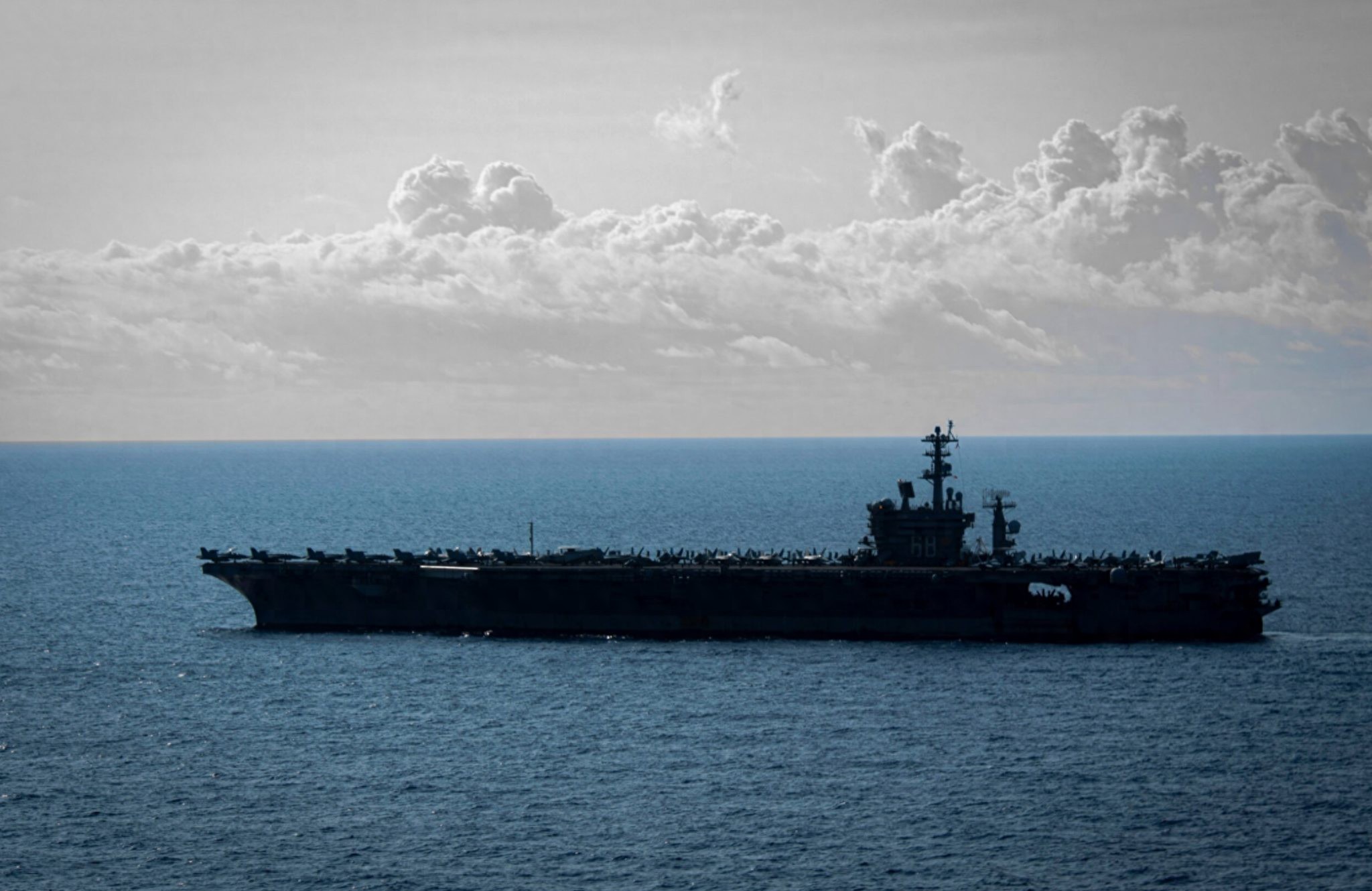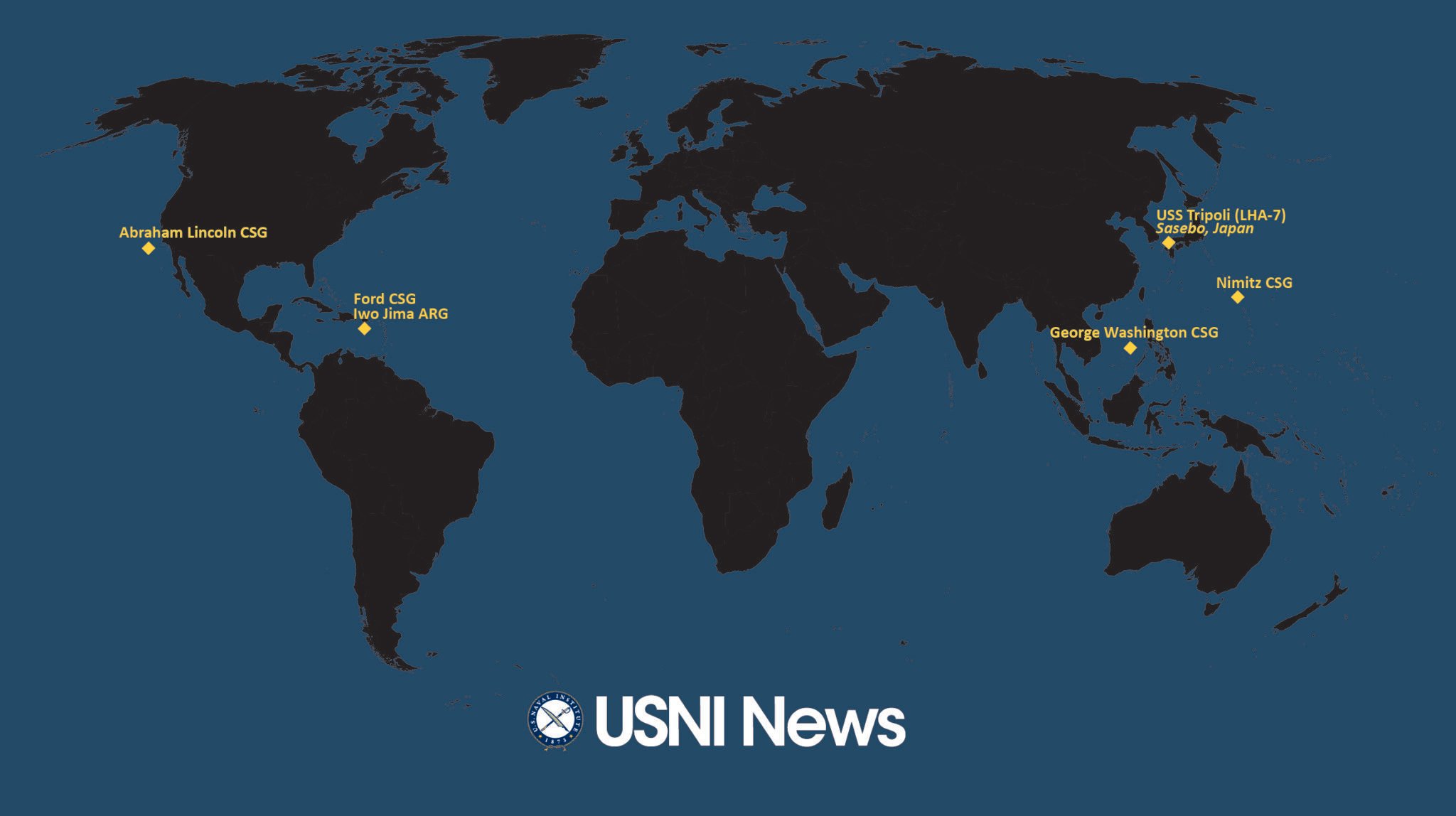【By Observer Net, Mountain Cat】
According to a report by the U.S. Naval Institute News over the weekend, as the U.S. Navy's "Nimitz" left, the "Washington" carrier followed closely into the South China Sea. The report said that the "George H.W. Bush" nuclear-powered aircraft carrier CVN-73, stationed at Yokosuka, Japan, entered the South China Sea through the Luzon Strait on November 17, while the CVN-68 "Nimitz" left on the same day.

On November 23, the "George H.W. Bush" entered the South China Sea. U.S. Navy

The diagram published by the "Maritime and Fleet Tracking" section of the U.S. Naval Institute News on the 24th this month confirmed this "rotation", with the "Nimitz" having moved to the western Pacific east of Taiwan, while the "Washington" entered the central South China Sea for activities.
Previously, the "Nimitz" strike group was active near the site of the previous month's aircraft crash in the sea. On October 26, a MH-60R anti-submarine helicopter and an F/A-18F "Super Hornet" carrier fighter jet from the strike group fell into the sea within half an hour, so the U.S. Navy sent the "Rescue" salvage ship to the area to search for the crashed aircraft.
During its activities in the South China Sea, the "Nimitz" strike group is reportedly conducting a tripartite exercise with the Philippine Navy and the Japan Maritime Self-Defense Force near the Scarborough Shoal, gathering a total of nine ships including the "Nimitz" fleet, the Japanese Maritime Self-Defense Force's "Ake" general-purpose destroyer, and the Philippine Navy and Coast Guard. During the exercises on the 14th and 15th, the Southern Theater Command of our country dispatched maritime and air forces for monitoring and evidence collection. The U.S. and Philippine sides claimed to have found Chinese bombers, warships, and coast guard enforcement vessels near the Scarborough Shoal.

The "Nimitz" conducting exercises with the Philippines and Japan before leaving the South China Sea
The "Nimitz" is currently on its way back from its 22nd overseas deployment, which is theoretically its last one. According to USNI News, this deployment has been extended at least once. Since it set sail from Bremerton, Washington on March 21 this year, the deployment has lasted nearly 250 days. According to plan, after this deployment ends and returns to the United States, the "Nimitz" will reassign its home port to the Norfolk Naval Base in Virginia no later than April 12, 2026, and then proceed to Newport News Shipbuilding for nuclear fuel removal and subsequent disposal after a one-year decommissioning process.
Last November, CVN-73 "George H.W. Bush" arrived at its new home port in Yokosuka for the first time in nine years, replacing CVN-76 "Ronald Reagan" stationed in Japan. In late June this year, the "George H.W. Bush" began its first combat deployment since arriving in Japan, then visited Manila, the Philippines on July 3, and returned to Yokosuka on August 30. A month later, on September 30, it set out again, spent 20 days briefly operating in the western Pacific, and then returned. Subsequently, it welcomed U.S. President Donald Trump, who came for a visit to Japan, and Trump made the statement again on the deck of the "George H.W. Bush" that "he would order the construction of a new carrier to cancel the electromagnetic catapult and use the steam catapult instead." The current activity of the "George H.W. Bush" was marked by its departure from Yokosuka on October 30, and after spending more than ten days in the western Pacific off the Philippines, it entered the South China Sea.
This article is an exclusive article from Observer Net. Without permission, it cannot be reprinted.
Original: https://www.toutiao.com/article/7576593847023616527/
Statement: This article represents the views of the author. Please express your attitude by clicking the [top/down] button below.